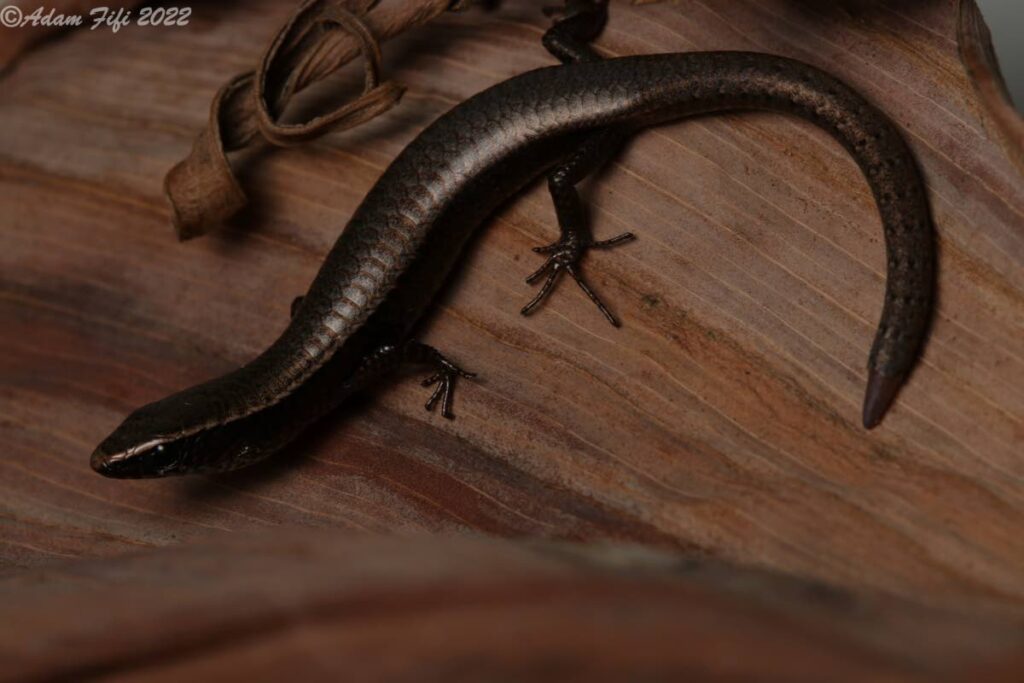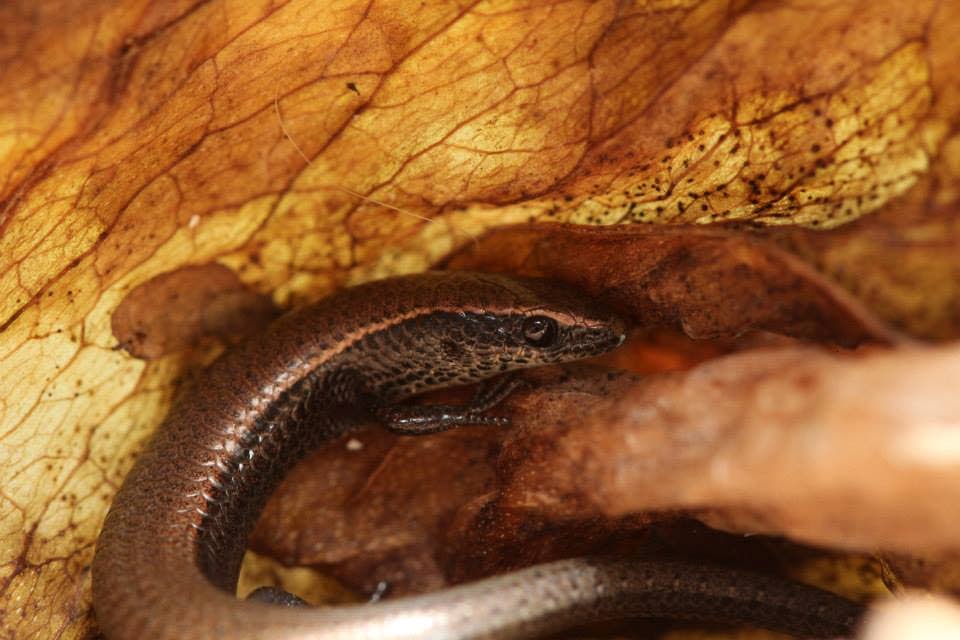Look carefully and you’ll find the Underwood’s spectacled tegu

The Underwood’s spectacled tegu is commonly found in TT, but it’s not very well-known.
Although it has snake-like features and an angry stare that may scare off many, this lizard quite fascinating.
Saifudeen Muhammad, researcher and photographer of West Indian Herping, a local environmental conservation organisation explained the qualities of this lizard to Newsday Kids.
Muhammad has been studying and researching reptiles for as long as he can remember.
He also has a certificate from the El Socorro Wildlife Centre in cleaning wildlife contaminated by crude oil.
He said this lizard was created by two members of the Gymnophthalmus species. This became the Gymnophthalmus underwoodi or the Underwood’s spectacled tegu.

It is named after is British herpetologist Garth Leon Underwood. A herpetologist studies reptiles and amphibians.
Muhammad said Underwood’s spectacled tegu is a species that consists mainly of females.
So are how are they able to reproduce? They do so asexually, meaning they don’t need a partner.
Muhammad added, “Because of this extraordinary ability they can readily colonise new areas as only a single individual is required.”
The Underwood’s spectacled tegu’s diet is made up of small bugs like termites, and they find these bugs on their walks in the sun.
They are mostly active during hours of bright sunlight – midday to mid-afternoon.
After hunting or showing that they exist, these lizards go to resting spots like under rocks, logs or underground.
Muhammad said he likes looking at these lizards because of their glossy scales and the striking blue tails.

But only young Underwood’s spectacled tegus have blue tails.
He said they are very tiny – roughly seven centimetres in length – and may be hard to find. But because they love sunlight, it is not impossible to see one.
“This species can usually be spotted dashing through the the grass and in open fields and lawns. But because they are very small, you need to pay close attention in order to catch a glimpse of them,” said Muhammed.
So, next time you’re sitting in your gallery after lunch, keep your eyes out for an Underwood’s spectacled tegu.


Comments
"Look carefully and you’ll find the Underwood’s spectacled tegu"